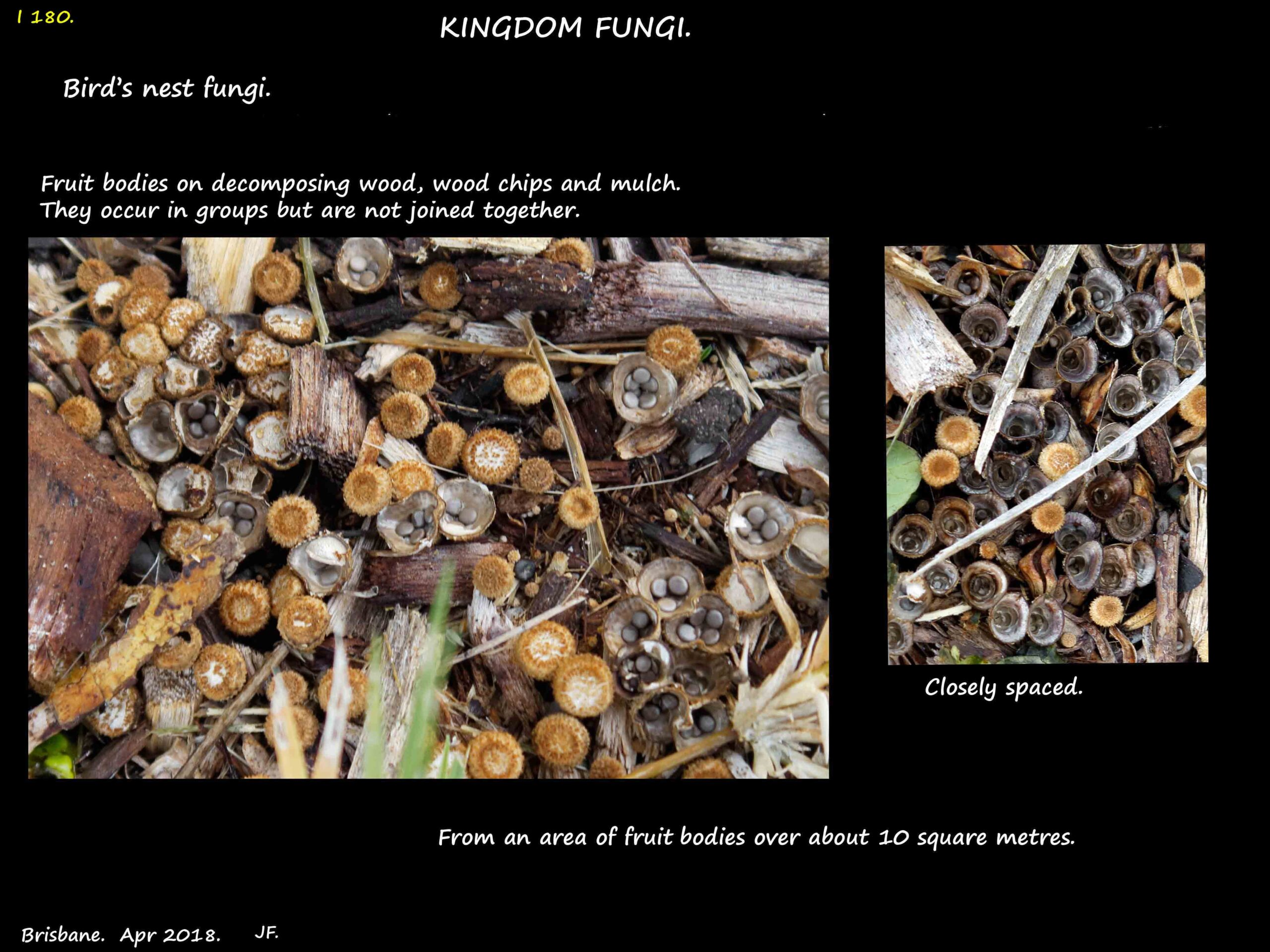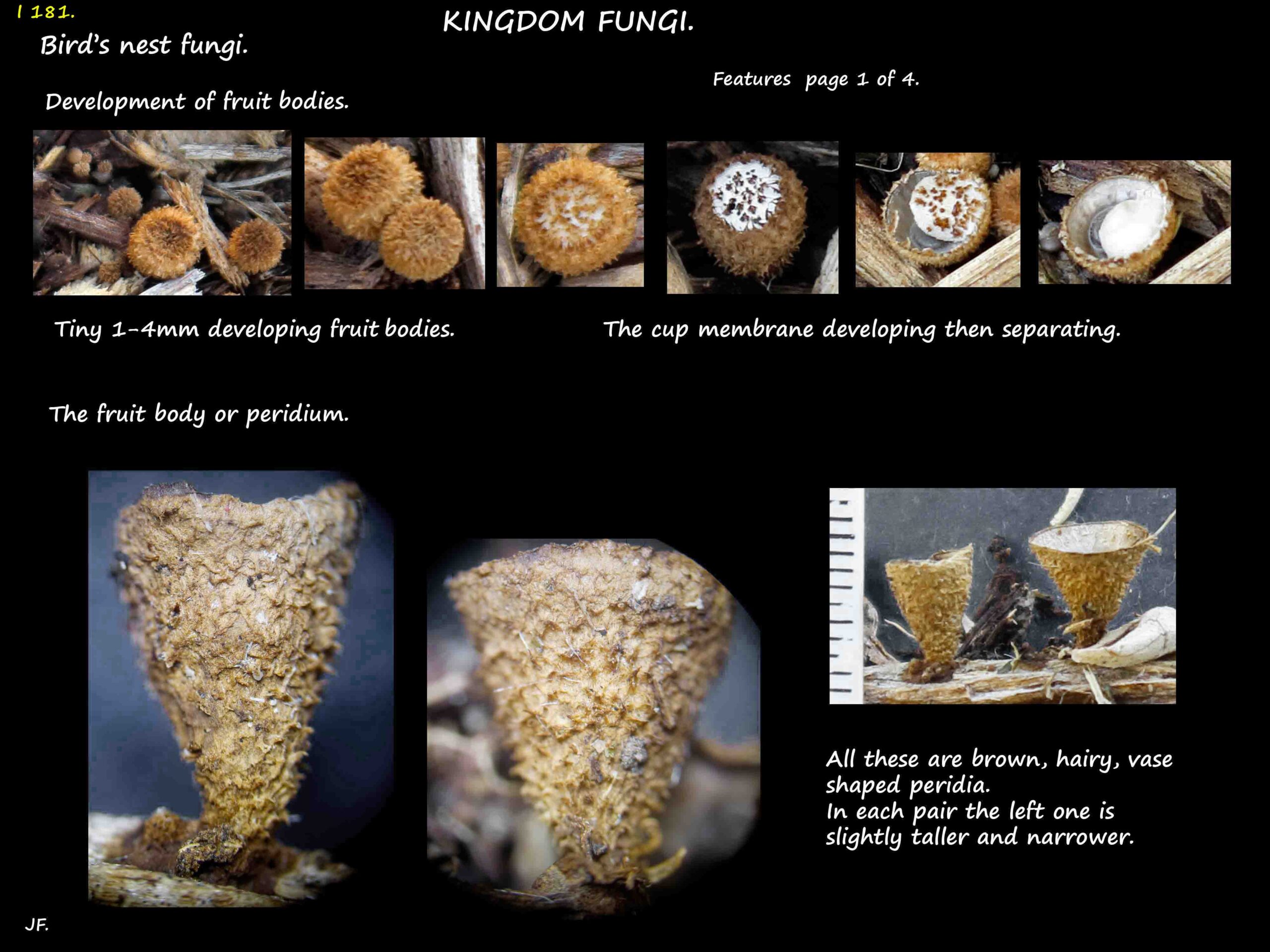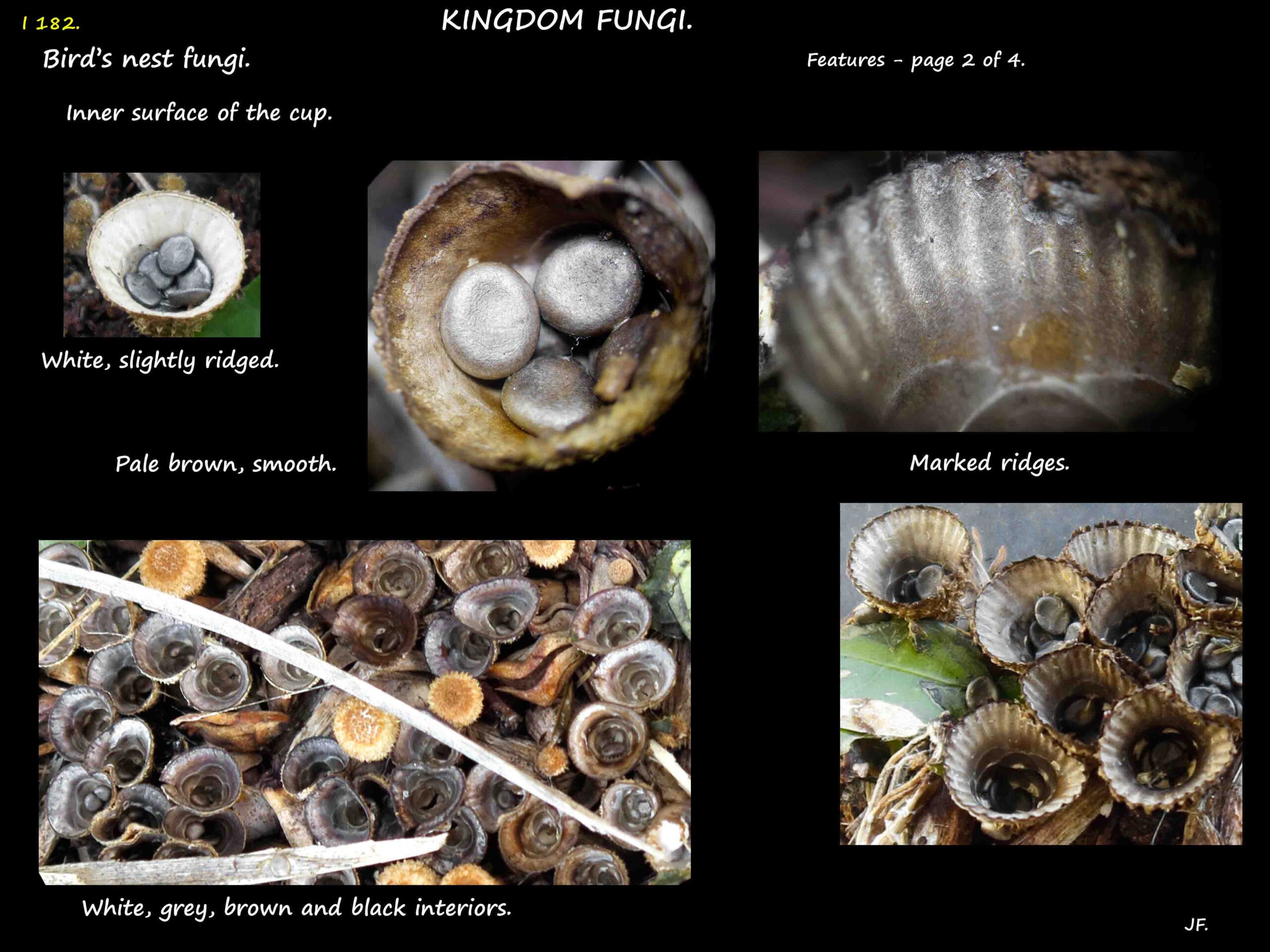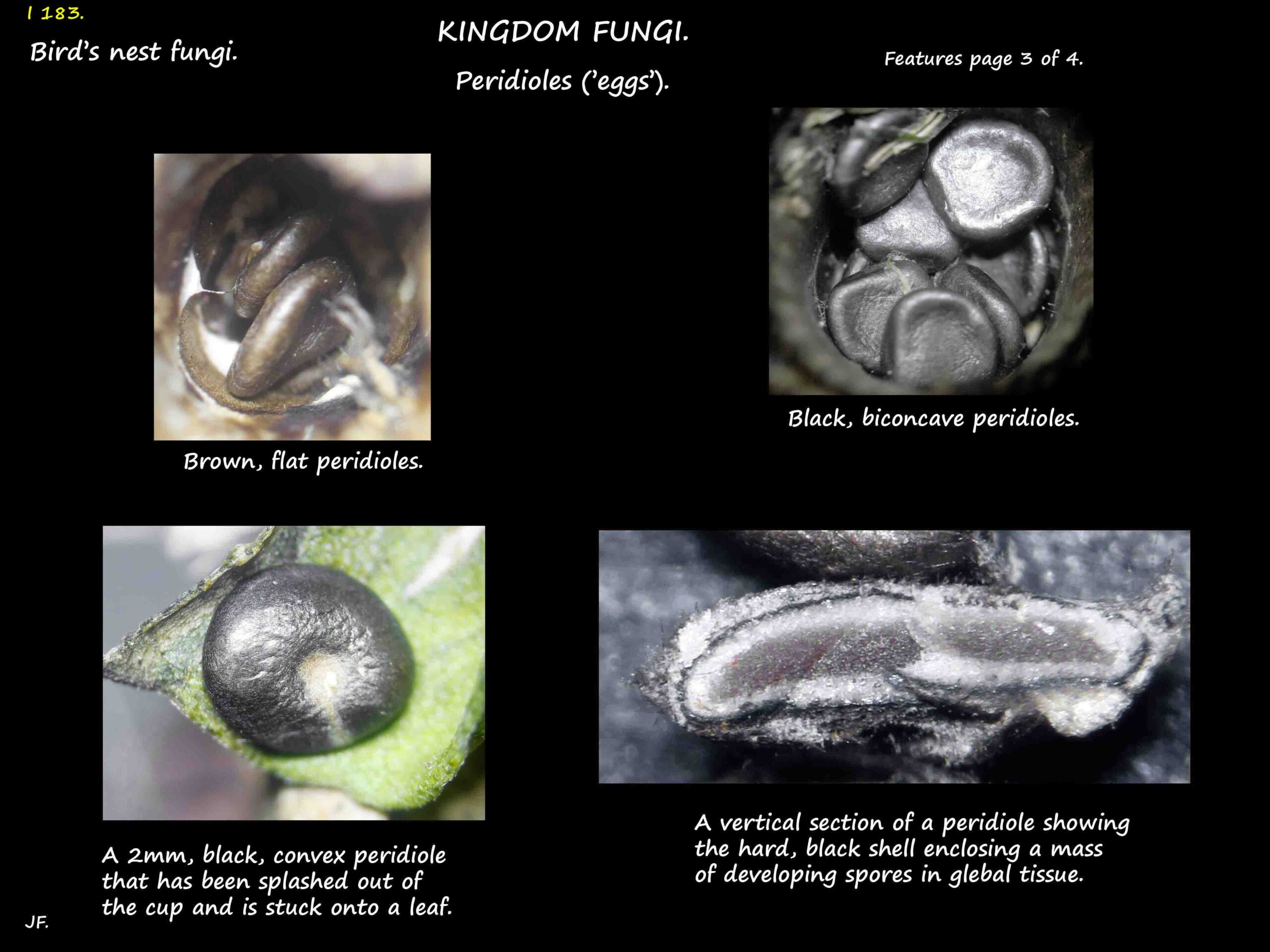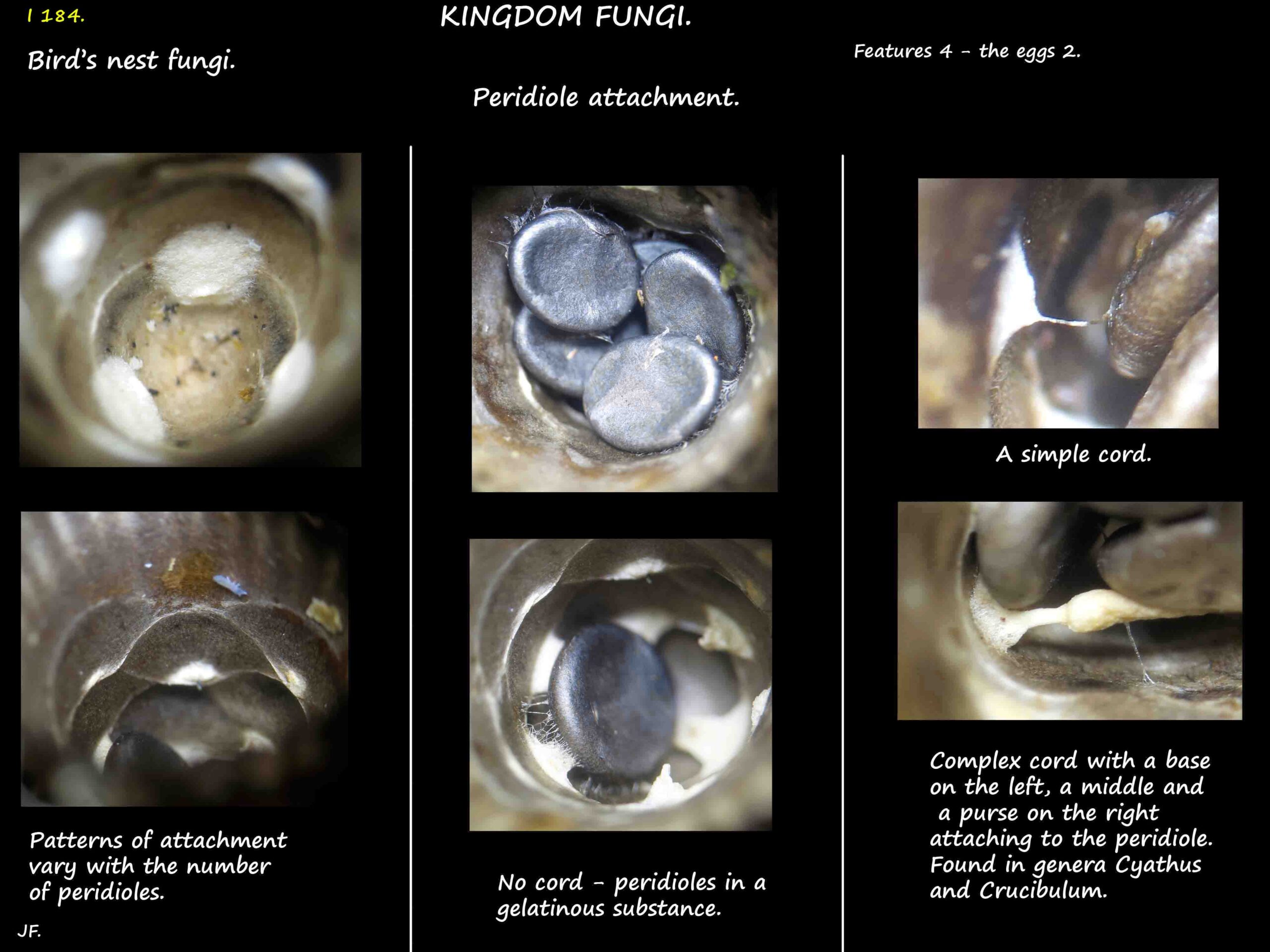Bird’s nest fungi.
Basidiomycota > Class Agaricomycetes > Order Agaricales > Family Nidulariaceae.
The ‘nest’.
The peridium is the wall of the fruiting body (the bird’s nest or cup) which contains the spore containing peridioles (‘eggs’).
In many species the peridioles are attached to the cup by a cord (funiculus) but in some they are free and lie in a jelly-like material.
Fruiting bodies, scattered or in groups, are found on decomposing wood, wood chips and mulch.
The peridium, from 0.5 to 18 mm high, is shaped like a cup, urn, vase, barrel etc.
The walls generally have a 70° slope but may be straighter and the rim may flare out.
The inside is smooth and shiny and may be dark or light in colour and grooved or striated.
The outside is covered with hair-like structures which may be velvety, shaggy or spiky.
The hairs can be brown, yellowish, white, grey or pink.
The hairs may wear off with age and the colour of the cup changes.
In young peridia the cup is covered in a thin membrane.
In species with a cord tethering the peridioles it may be simple or complex in structure.
It sometimes withers with age.
The ‘eggs’.
There may be one or several peridioles in each cup.
They are typically disc-shaped, 1-3 mm in diameter, with a hard coat and filled with a mass of spores in glebal tissue.
They may be black, brown, yellow-brown or reddish-brown.
Some species are covered in a white membrane which disappears with age.
Peridioles are mainly dispersed by rain drops splashing them out of the cups.
They can travel up to a metre and stick to any vegetation they touch.
In some species the cord stretches and becomes entangled in vegetation.
Herbivores swallow the peridioles and the spores develop in their droppings.
There are 5 genera – Crucibulum, Cyathus, Mycocalia, Nidula, Nidularia – with nearly 70 species,
over half in the genus Cyathus.
All the above features, plus the spores, must be considered in distinguishing the species bearing in
mind that appearances may change with age.
A few helpful features are:
- Crucibulum have only 1 layer in the cup wall, have a cord, peridioles are black with a white coating.
- Cyathus have a three-layered wall and a complex cord, peridioles black.
- Myocalia have yellow-brown or red-brown peridioles.
- Nidula cups have straighter sides, no cord, peridioles brown.
- Nidularia have the smallest cups with spiky hairs, and up to 100 brown peridioles.
There are variations within each genus and the above are only generalisations.
J.F.
